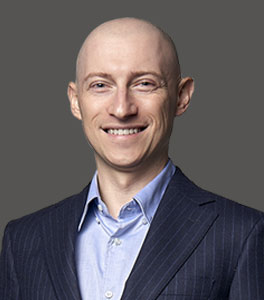

Mole removal is a surgical procedure that is aimed to rid the face of any unwanted moles for aesthetic purposes. Dr. Gary Linkov is a skilled facial plastic surgeon who performs mole removal at City Facial Plastics in Midtown, Manhattan. His expertise in face & neck procedures can ensure the mole is removed without leaving a visible scar, improving the overall appearance of your face or neck.


Mole removal, especially on the face, involves a surgical procedure. The main options are shave removal or excisional removal. Laser can sometimes be used to lighten and flatten a mole. The most important factor when treating a mole is to properly sample it, if appropriate, to determine if it is cancer (such as melanoma). A secondary priority is to leave the smallest footprint possible on the face upon mole removal.
Different lesions on the face can be present from birth and grow in proportion to facial development. Other lesions can suddenly change color or size and warrant an investigation. A mole, or nevus, is a type of skin lesion that some people want to be removed for cosmetic reasons and others need removed to confirm that it is not dangerous.
Dark moles, or nevi, of the head and neck, are a common concern among patients. Moles come in a variety of subtypes, including:
A nevus, or mole, includes a few different varieties. The typical “beauty mark” mole is flat and usually brown. Flat mole removal can be performed with laser therapy, as they are often only on the surface of the skin. A few laser treatments can be effective at removing these types of moles.
Dr. Linkov is a highly trained doctor who made me feel comfortable the minute I walked in. I came to Dr. Linkov for a mole removal procedure. I was super nervous but Dr. Linkov went through all the steps and addressed all my concerns. He was thoughtful, honest and attentive with his approach in answering all my questions. During the procedure, Dr. Linkov was delicate and took his time. He made sure I was doing okay every couple of minutes. After the procedure was completed, Dr. Linkov called me the next day to check on the healing process. Because of Dr. Linkov’s expertise and care for his patients, I highly recommend this doctor. I am happy with the results and thankful for Dr. Linkov!
Monika Mannan
Protruding moles are often the nevi that are most distracting, warranting removal for cosmetic reasons. The roots of the mole run deep in the skin, usually requiring more than laser therapy to remove. An incision or a shaving technique may be used, depending on the location and size of the mole.
Skin tags are different than colored moles. They are usually small, protruding growths of skin-colored cells. These can quickly be removed during an office visit.
The following scenarios lend best to qualifying someone for mole removal:
Indications for biopsy include asymmetry of the lesion, border irregularity, color variegation, diameter >6mm, and evolution, or change of the lesion.
There are four main approaches to skin mole removal:
Once you have decided to undergo skin mole removal, plastic surgeon in UES, Manhattan Dr. Linkov will discuss in detail how to prepare for your surgery.
There are a few steps you should take before this type of surgery to get the best results. These steps include:
If indicated, you will take the antibiotic in the office just before surgery. Skin mole removal surgery is performed under local anesthesia (lidocaine) so the pain will be minimal to none during your procedure. Sterile technique is used to prevent infection. The timing of the actual procedure varies, but it takes approximately 30 minutes – 1 hour. Including time spent checking in to the mole removal doctors office, marking out the surgical sites, anesthesia injections, surgery, and recovery, you should plan to be at your doctor’s office for about 1 hour.
Recovery from flat or raised mole removal depends on the exact technique used. The treated area is covered with a bandage right after the procedure which can be removed the following day. It is okay to shower the day after the procedure. Localized bruising and swelling are possible for 1-2 weeks, especially if a larger mole is removed.
A shave biopsy will take about 10-14 for the skin to grow back. If sutures are placed they are removed on day 5 or 6 after surgery. The incision can stay red for weeks to months. Scar gel is recommended for incisions for up to 3 months once the skin seals closed at about 10-14 days. It is best to avoid direct sun exposure to the treated area for several months after surgery.
Risks and complications of mole removal surgery include:
Most approaches to skin mole removal do leave a scar, though some may not be noticeable.
If a scar forms and is unacceptable to the patient, the following scar revision options are available:
Though there are no absolute contraindications to mole removals, as these are relatively minor procedures.
Certain situations that would require a thorough discussion with your mole removal doctor include:
Patients may choose not to have their mole(s) removed and may opt for observation instead. Another option is to conceal the mole with makeup. Beware that certain websites suggest using home supplies such as scissors to remove a mole – this is extremely dangerous and may cause infection and other bodily harm. Avoid all do-it-yourself solutions.
Whether for cosmetic purposes or to determine if a mole is worrisome, mole removal is associated with high satisfaction rates. Patients often find that people stare at them less after a mole has been removed and they feel more confident.
Mole removal in New York may be covered by insurance if the procedure is deemed medically necessary by your doctor. That is, if cancer is suspected and a biopsy is required, then insurance will likely pay. If, on the other hand, the surgery is done purely for cosmetic reasons then insurance will not cover it. Before undergoing the procedure, review your policy to find out if it will be covered by your insurance.
If you are paying out of pocket, the price of mole removal will vary based on several factors. Practice location and expertise of the surgeon are two of the main factors that will determine how much this type of surgery will cost. Another factor to consider is the size of the mole and the total number of moles to be removed, as some patients have multiple moles.
Dr. Gary Linkov is a board-certified facial plastic surgeon in New York City, specializing in facial aesthetic surgery. Dr. Linkov is the best-rated mole removal specialist with extensive experience treating all conditions of the head and neck. He is the Chief of Otolaryngology and Facial Plastic Surgery for the Veterans Hospital in Brooklyn, NY, where he operates on complex facial conditions impacting our country’s veterans. Dr. Linkov’s private practice in Manhattan’s Upper East Side focuses on cosmetic and reconstructive facial surgery. He is an expert in skin tag and mole removal.
If you have a mole you want to be removed for cosmetic purposes, contact City Facial Plastics in Manhattan, NY to schedule a consultation with a top-rated plastic surgeon Dr. Gary Linkov. Most cosmetic mole removals can be completed in our office with local anesthesia, and there is little to no downtime for recovery.
Dr. Linkov is a highly trained doctor who made me feel comfortable the minute I walked in. I came to Dr. Linkov for a mole removal procedure. I was super nervous but Dr. Linkov went through all the steps and addressed all my concerns. He was thoughtful, honest and attentive with his approach in answering all my questions. During the procedure, Dr. Linkov was delicate and took his time. He made sure I was doing okay every couple of minutes. After the procedure was completed, Dr. Linkov called me the next day to check on the healing process. Because of Dr. Linkov’s expertise and care for his patients, I highly recommend this doctor. I am happy with the results and thankful for Dr. Linkov!
Monika Mannan

Dr. Linkov is a double board-certified by the American Academy of Facial Plastic and Reconstructive Surgery and the American Board of Otolaryngology-Head & Neck Surgery. A native of New York, Dr. Linkov graduated as a salutatorian from Cornell University and received his Medical Degree at Columbia University College of Physicians and Surgeons. Dr. Linkov conducted advanced head and neck cancer research at the world-renowned Memorial Sloan Kettering Cancer Center. Dr. Linkov is a former Adjunct Assistant Professor at New York University (NYU), where he taught Rhinoplasty.
Dr. Linkov is a top-rated facial plastic surgeon in New York who specializes in lip lift, facelift, rhinoplasty, and hair transplant. He has been named one of the top 5 lip lift surgeons in the United States, is listed in the prestigious SuperDoctors New York™ registry, and has appeared on the Dr. Oz Show, where he discussed the state-of-the-art hair transplantation procedure.


City Facial Plastics 150 E 56th St, #1AB, New York, NY 10022 (212) 439-5177